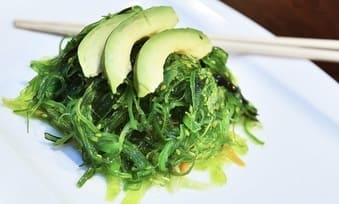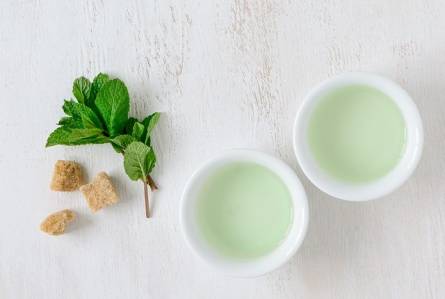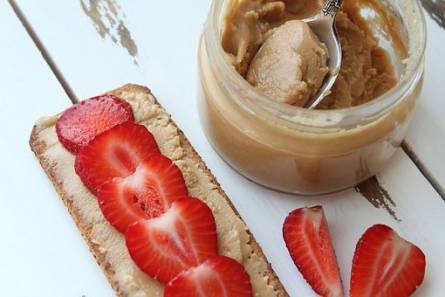What is seaweed salad? The seaweed salad is a tasty meal prepared by combining different kinds of edible seaweed with ingredients such as sesame oil, soy sauce, sesame seeds, and other spices.
Seaweed salad has become increasingly popular as a healthy food option due to its low calorie and fat content. It is not only tasty but also provides a variety of health benefits.
Pros of Eating Seaweed Salad During Pregnancy
Consuming seaweed salad while pregnant can offer several advantages for both the mother and the fetus. The abundance of iodine present in seaweed is necessary for maintaining a well-functioning thyroid, which is vital for the growth of the baby’s brain and nervous system.
Seaweed is also a great source of vitamins and minerals, including folate, magnesium, iron, and calcium, which are all important for the baby’s growth and development. Furthermore, seaweed is a nutritious option for controlling weight gain during pregnancy due to its low calorie and fat content. Seaweed’s fiber content is also beneficial in preventing the discomfort of constipation, which is commonly experienced by pregnant women.
Cons of Eating Seaweed Salad During Pregnancy
While there are several health benefits associated with eating seaweed salad during pregnancy, it is important to consider some potential cons as well. One of the main concerns is the high iodine content in seaweed. While iodine is essential during pregnancy for fetal brain development, consuming excessive amounts can be harmful. Therefore, it is crucial to maintain a balance and not exceed the recommended daily intake of iodine.
Another factor to consider is the existence of harmful substances like mercury and arsenic in seaweed. These toxic elements can build up in the body over time and endanger the health of both the mother and the growing fetus. To minimize this danger, it is recommended to select seaweed from reputable sources and consume it in reasonable amounts.
Some individuals may have allergies or sensitivities to certain types of seaweed, which can lead to adverse reactions or digestive issues.
Precautions When Eating Seaweed Salad During Pregnancy
When it comes to consuming seaweed salad during pregnancy, it is important to exercise some precautions. Firstly, it is crucial to ensure that the seaweed used in the salad is fresh and of high quality. This means avoiding any salads that have been left out for too long or have an off-putting smell. Additionally, pregnant women should be cautious about the type of seaweed they consume, as certain varieties may contain higher amounts of iodine, which can be harmful in excessive quantities.
Lastly, pregnant women should also consider any potential allergies or sensitivities they may have to seaweed and monitor their body’s response accordingly. By taking these precautions, expectant mothers can enjoy the nutritional benefits of seaweed salad while keeping their health and baby’s well-being in mind.
How Much Seaweed Salad Should You Eat During Pregnancy?
When it comes to incorporating seaweed salad into your pregnancy diet, it’s essential to consider the appropriate amount. While seaweed is packed with nutrients, moderation is key. It is recommended to consume seaweed salad in small portions during pregnancy. Experts suggest that pregnant women should aim for about 1-2 servings of seaweed salad per week.
Consuming too much seaweed salad can potentially lead to an excessive intake of iodine, which may have negative effects on thyroid function. Additionally, seaweed naturally contains some levels of heavy metals like arsenic and cadmium, which should be limited during pregnancy.
Preparation and Cooking Tips for Seaweed Salad During Pregnancy
To ensure the safety and enhance the flavor of seaweed salad during pregnancy, there are a few important preparation and cooking tips to keep in mind. Firstly, it’s crucial to thoroughly wash the seaweed before using it. This will help remove any impurities or salt residues. Next, you can soak the seaweed in water for about 10 minutes to rehydrate it. Once it’s ready, drain the excess water and pat it dry with a clean towel or paper towel.
When it comes to cooking, keep in mind that seaweed salad doesn’t require much cooking time. You can lightly blanch the seaweed by briefly immersing it in boiling water for just a few seconds. Another option is to simply marinate the seaweed in a mixture of vinegar, soy sauce, and sesame oil for added flavor.
Remember to always follow safe food handling practices during preparation and cooking, such as washing your hands and using clean utensils and surfaces. By following these tips, you can enjoy a delicious and safe seaweed salad during your pregnancy.
Seaweed Salad: A Short and Simple Recipe

Do you have a hankering for a nutritious and zesty salad that will leave you feeling refreshed? Seaweed salad, famous for its distinct texture and abundance of minerals, could very well be the ideal dish for you.
- Ingredients Gathering:
- Dried Seaweed: Look for ‘wakame’ or a mix specifically labeled for salads.
- Soy Sauce: A tablespoon for that umami flavor.
- Rice Vinegar: Adds a mild acidity, crucial for the dressing.
- Sesame Oil: For a nutty, aromatic touch.
- Sugar: Just a pinch to balance the flavors.
- Sesame Seeds: Toasted, for garnishing.
- Chili Flakes: Optional, for a spicy kick.
- Fresh Ingredients: Cucumber, radishes, or avocado for extra texture and freshness.
- Seaweed Preparation:
- Soak the dried seaweed in warm water for about 5 to 10 minutes. They will expand significantly, so start with a small handful.
- Once rehydrated, drain the seaweed and use your hands to squeeze out any excess water.
- Making the Dressing:
- In a small bowl, whisk together soy sauce, rice vinegar, sesame oil, and sugar until the sugar dissolves.
- Combining Everything:
- Place the drained seaweed in a mixing bowl.
- Add any fresh ingredients you’re including, like thinly sliced cucumber or radishes.
- Pour the dressing over the seaweed and fresh components, tossing gently to coat everything evenly.
- Final Touches:
- Sprinkle toasted sesame seeds and a pinch of chili flakes over the top of the salad for extra flavor and crunch.
- Refrigerate for at least 30 minutes before serving to allow the flavors to meld together.
- Tips and Alternatives:
- If wakame isn’t to your taste, try using arame or hijiki seaweed. Keep in mind they might have different soaking times.
- For a citrusy twist, add a squeeze of lemon juice or zest to the dressing.
Alternatives to Seaweed Salad During Pregnancy
When it comes to pregnancy, it’s always important to have a varied and balanced diet. If you’re not a fan of seaweed salad or prefer to try something else during your pregnancy, there are plenty of alternatives to choose from.
One option is to incorporate other types of seaweed into your meals, such as nori or kombu. These can be used in sushi rolls, miso soup, or stir-fries for a similar nutrient boost without the texture of a salad.
If you’re looking for different sources of essential nutrients found in seaweed, incorporating leafy greens like spinach, kale, or collard greens into your meals can provide you with many of the same benefits. These vegetables are rich in essential vitamins and minerals that support a healthy pregnancy.
Additionally, fish like salmon or tuna can be an excellent alternative as they provide omega-3 fatty acids and protein. Just make sure to choose low-mercury options and cook them thoroughly before consumption.
Conclusion
To sum it up, seaweed salad can be a nutritious addition to a pregnant woman’s diet. It is packed with essential vitamins and minerals like iodine, iron, and calcium, which are beneficial for both the mother and the baby. The iodine in seaweed is crucial for the development of the baby’s brain and nervous system. Additionally, the high fiber content helps with digestion and prevents constipation, a common issue during pregnancy.
However, it is important to consume seaweed salad in moderation as it may contain high levels of sodium and heavy metals. Pregnant women should also be cautious of the types of seaweed used in the salad, as some varieties may have higher levels of contaminants than others.
Frequently Asked Questions
Here are some commonly asked questions about eating seaweed salad during pregnancy:
Is it safe to eat seaweed salad while pregnant?
Eating seaweed salad in moderation and selecting types with low mercury levels can be a healthy choice for pregnant women.
Can eating seaweed salad harm my baby?
If you eat seaweed salad in moderate amounts, it is usually safe for both you and your baby. However, consuming excessive amounts of specific types of seaweed can result in elevated iodine levels and potentially be hazardous.
Are there any alternatives to seaweed salad during pregnancy?
Yes, if you’re not comfortable eating seaweed salad, there are other options to consider. You can try incorporating other nutrient-rich foods like leafy greens, beans, or fortified foods into your diet.
How much seaweed salad should I eat during pregnancy?
It’s recommended to consume seaweed salad in moderation – about once or twice a week. This way, you can enjoy its benefits without potential risks associated with excessive intake.
Always remember to consult with your healthcare provider before making any significant changes to your diet during pregnancy.










The good. Seaweed is low in Saturated Fat, and very low in Cholesterol. It is likewise a good source of Vitamin A, Vitamin C, Vitamin E (Alpha Tocopherol), Vitamin K, Niacin, Pantothenic Acid and Phosphorus, and an excellent source of Riboflavin, Folate, Calcium, Iron, Magnesium, Copper and Manganese.
The bad: This food is very high in Sodium. Perhaps it has something to do with originating from the sea …
As a result, I assume that seaweed salad can not harm a pregnant woman, if you do not eat constantly and for many. Actually, as with other products.
Seaweed salad is great for your health. It’s not only abundant in minerals and iodine however among the few resources of nutrition for vegetarian and vegans. Seaweed salad includes numerous minerals such as iodine, vitamins, algin acid and calcium that good during pregnancy as well.
As Gary Wu pointed out, iodine is the main benefit of health benefit of why individuals would eat seaweed salad. However, there are more advantages to eating seaweed salad.
Calcium — seaweeds includes about 7 times more calcium than the milk, making stronger bones.
Iodine — helps your metabolic process. Seaweed has 80% more absorption of minerals compare to other food and thought to be an efficient method of taking in the iodine.
Vitamin B1 and B2 — helps you relieve fatigued
Algin acid — helps you eliminate Sodium from your system. It will help you prevent high blood pressure and arteriosclerosis.
I eat a great deal of seaweed. I like Kelp(kelp is the most functional.) Bladderwrack, Hijiki and Wakameke. There is lots of ways to consume seaweed from shushi, to salad. Consuming too much seaweed can trigger adverse conditions.